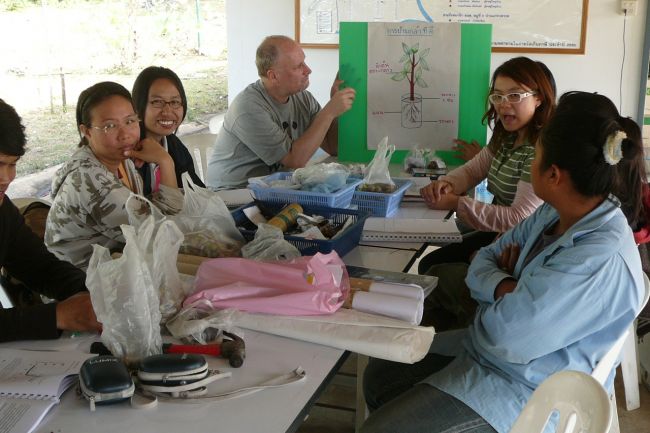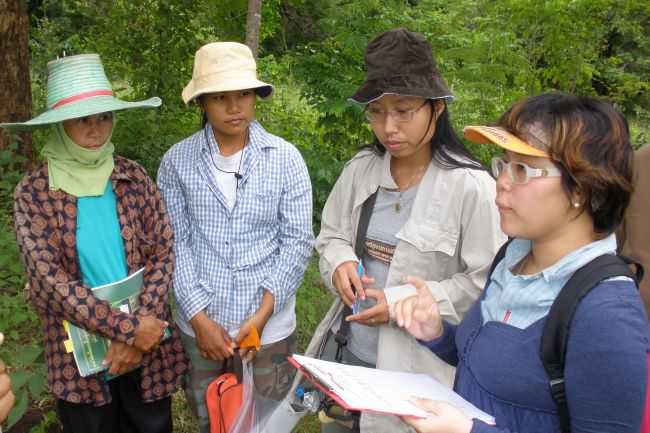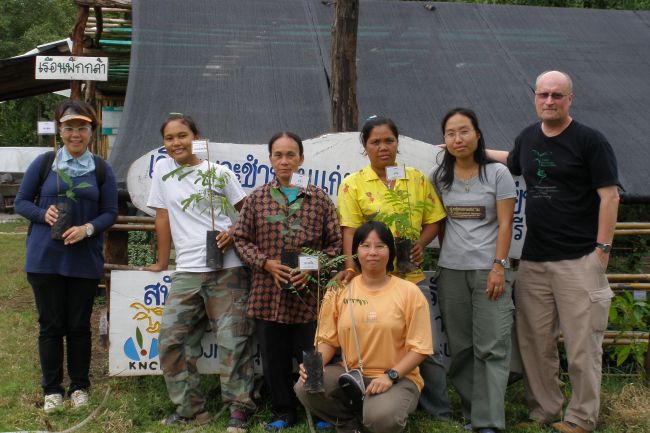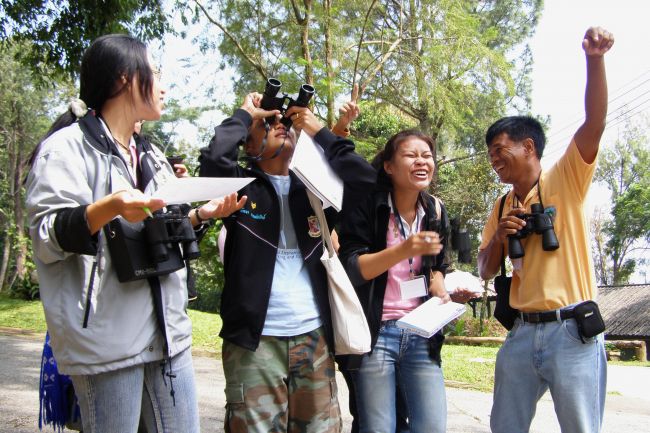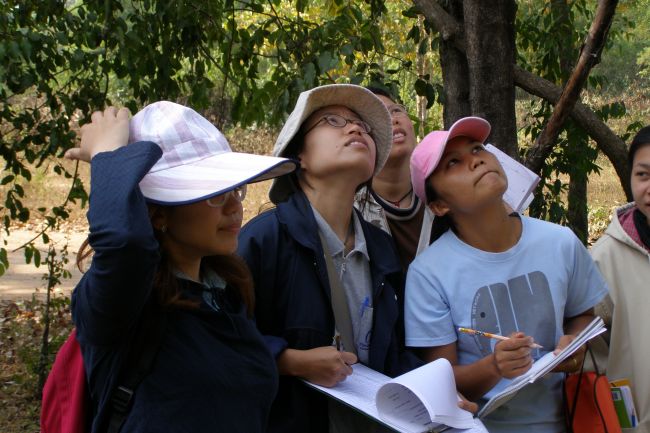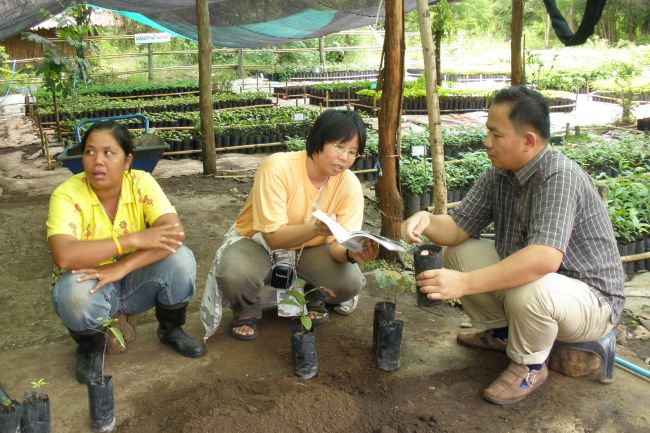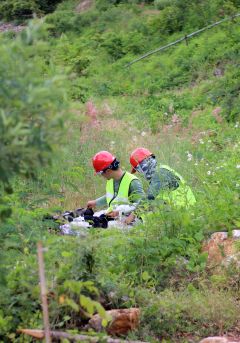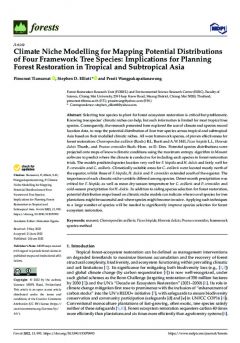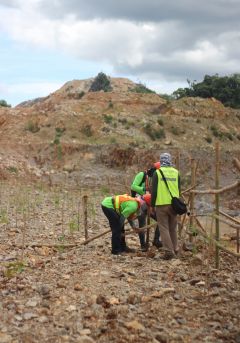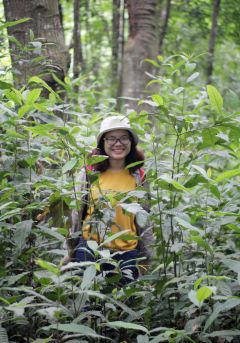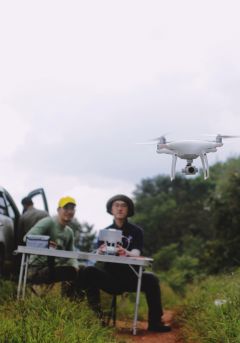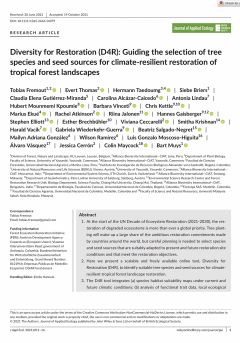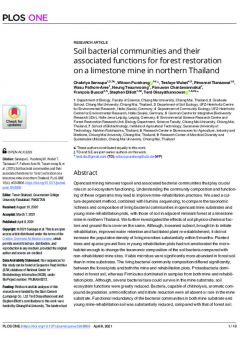
This project created an original knowledge-base to restore bamboo-deciduous forest in Western Thailand, particularly to create habitat for elephant conservation and to reduce human-elephant conflicts around the Salakpra Conservation Area, Kanchanaburi Province. The project was funded by the Keidanren Nature Conservation Fund with the Zoological Society of London (ZSL) and was implemented by the Elephant Conservation Network (ECN), with FORRU-CMU assisting with technical matters.
The objectives were:
- to develop local capacity to implement forest restoration activities;
- to determine tree species composition of the main forest formations in Salakpra;
- to determine optimal seed collection times/treatments to hasten seed germination & seedling growth;
- to develop and manage a community-based forest tree nursery and planting sites and
- to present initial results to stakeholders to empower them to implement forest restoration.
Activities and outputs
FORRU-CMU's inputs consisted mostly of training ECN staff on restoration theory and practices; training local people in nursery techniques so they could grow saplings of the required tree species and assisting with monitoring trial plots and analysing the data, culminating in a technical manual (in Thai) on how to restore the bamboo-deciduous forest that dominated lowland areas of Salakpra—bamboo being the main food of the several hundred wild elephants that inhabited the protected area.
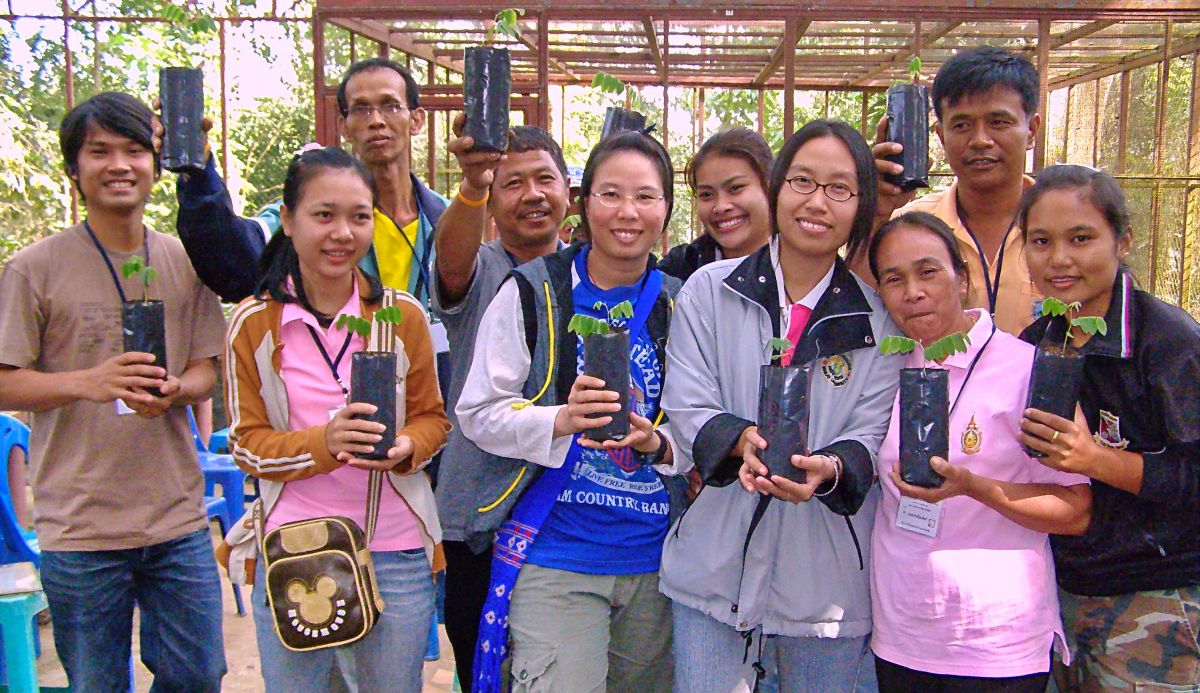
The final project activity, in September 2011, was an information-sharing workshop, with local foresters, community leaders, villagers and NGO representatives, at which the results of nursery experiments and field trials were presented, along with the resultant best practices detailed in the manual.
Field Performance of Planted Trees
Monitoring is essential for adaptive management. Click here to learn how to measure tree survival and growth and find out if your restoration plan is working.
11: Use of Unmanned Aerial Vehicle (UAV) Imagery to Monitor Progress of Early Forest Ecosystem Restoration in an Opencast Mine
ABSTRACT: Monitoring forest restoration is essential for improving and advancing restoration techniques, but human-based monitoring is costly as it requires intensive labour in the field. Although...
12: Climate niche modelling for mapping potential distributions of four framework tree species: Implications for planning forest restoration in Tropical and Subtropical Asia
ABSTRACT: Selecting tree species to plant for forest ecosystem restoration is critical but problematic. Knowing tree species’ climatic niches can help, but such information is limited for most...
13: Seed dispersal and seed predation between natural forest and restored forest area in Mae Rim District, Chiang Mai
ABSTRACT: Seed dispersal and seed predation are natural mechanisms reflecting natural regeneration. The objective of this study was to compare seed dispersal and the effect of seed predators in a...
14: Comparison of seedling detection and height measurement using 3D point cloud models from three software tools: applications in forest restoration
ABSTRACT: A challenge for forest restoration is monitoring success, particularly in terms of seedling survivorship. 3D-point-cloud models, generated from aerial images taken from unmanned aerial...
15: Comparative study on tree seedling growth rate and diversity between a natural forest and a restored forest area in Mae Rim District, Chiang Mai
ABSTRACT: In 1967, Thailand had forest cover as high as 53.22 percent of the country's land area, but in 2021 the forest area was reduced to 31.68 percent, of which 63.99 percent was forested in...
16: The diversity of mammal in natural and restored forest in Mae Rim district, Chiang Mai Province
Forest areas in Mae Rim District, Chiang Mai Province, have been converted to farmlands, causing the area to deteriorate and affecting wildlife habitats. Various organizations are working to...
17: Distribution of Castanopsis calathiformis (Skan)Rehder & E.H.Wilson Seedlings Beneath Maternal Tree Crowns in Forest Restoration Plots
ABSTRACT: Castanopsis calathiformis (Skan) Rehder & E.H.Wilson is one of indigenous tree species in the Fagaceae that was planted in 1998 in a restoration plots in a deforested area near Mae Sa...
18: UAV-derived forest degradation assessments for planning and monitoring forest ecosystem restoration: towards a forest degradation index
ABSTRACT: Global initiatives such as the Bonn Challenge and the New York Declaration on Forests have prompted large-scale forest restoration projects to combat land degradation, preserve...
19: Diversity for Restoration (D4R): Guiding the selection of tree species and seed sources for climate-resilient restoration of tropical forest landscapes
ABSTRACT: 1. At the start of the UN Decade of Ecosystem Restoration (2021–2030), the restoration of degraded ecosystems is more than ever a global priority. Tree planting will make up a large...
20: Soil bacterial communities and their associated functions for forest restoration on a limestone mine in northern Thailand
ABSTRACT: Opencast mining removes topsoil and associated bacterial communities that play crucial roles in soil ecosystem functioning. Understanding the community composition and functioning of...

